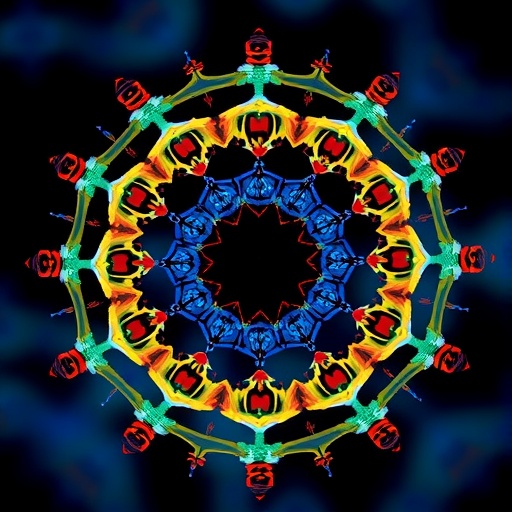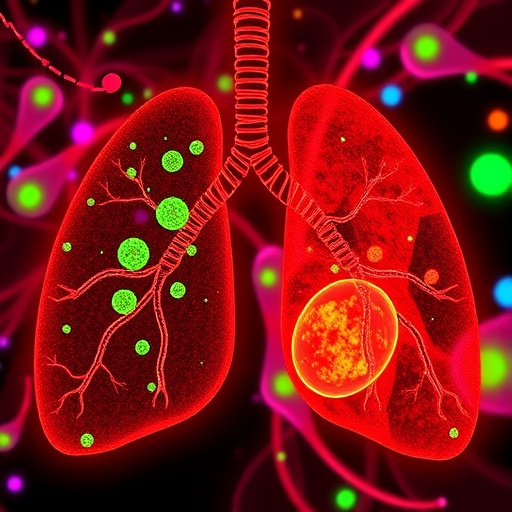In the relentless pursuit of safer and more effective pharmaceuticals, understanding the intricate dance of drug metabolism has always stood as a cornerstone in drug discovery and development. Central to this process is the family of Cytochrome P450 (CYP450) enzymes, whose broad substrate specificity and complex interaction profiles govern the Absorption, Distribution, Metabolism, Excretion, and Toxicity (ADMET) characteristics of myriad compounds. Recent advances have illuminated a promising frontier in this domain: the application of graph-based computational models that decode the nuanced biochemistry of major CYP450 isoforms, offering unprecedented precision in ADMET prediction and propelling drug safety evaluations to new heights.
Traditional experimental methods for assessing CYP450-mediated metabolism, though invaluable, are often constrained by high costs, extensive timelines, and limited scalability. These limitations hamper early-stage drug screening where rapid and accurate predictions are paramount. In response, computational approaches have evolved, moving from simplistic rule-based algorithms to sophisticated machine learning paradigms. Among these, graph-based models—particularly Graph Neural Networks (GNNs), Graph Convolutional Networks (GCNs), and Graph Attention Networks (GATs)—have emerged as powerful instruments. By representing molecules and their interactions as graphs, these networks can harness structural and electronic nuances inherent in chemical and protein architectures, capturing the multifaceted enzyme-ligand interplay essential for metabolic prediction.
Focusing on five pivotal CYP isoforms—CYP1A2, CYP2C9, CYP2C19, CYP2D6, and CYP3A4—current research exploits graph-based techniques to disentangle their distinct metabolic roles and substrate specificities. These isoforms account for the majority of xenobiotic metabolism, rendering their accurate modeling critical. Graph-based deep learning frameworks analyze molecular graphs to predict not only binding affinities but also the metabolic rates and potential toxicities with enhanced granularity. This method surpasses traditional descriptor-based models by directly encoding atom-level connectivity and bond relationships, leading to more robust and generalizable ADMET predictions.
.adsslot_3jSetDyXV2{ width:728px !important; height:90px !important; }
@media (max-width:1199px) { .adsslot_3jSetDyXV2{ width:468px !important; height:60px !important; } }
@media (max-width:767px) { .adsslot_3jSetDyXV2{ width:320px !important; height:50px !important; } }
ADVERTISEMENT
Incorporating multi-task learning represents a significant leap in model sophistication, allowing simultaneous prediction of various pharmacokinetic parameters across multiple CYP450 isoforms. This approach trains a single model to understand shared and isoform-specific features concurrently, thereby improving predictive power and reducing overfitting risks. Additionally, attention mechanisms embedded within GATs have dramatically enhanced interpretability by selectively focusing on crucial molecular substructures influencing enzyme interactions. Such insights shine a light on biochemical determinants driving metabolism, aiding medicinal chemists in rational drug design and optimization.
Parallel to these advancements, the integration of explainable AI (XAI) techniques addresses a critical bottleneck in deploying machine learning models in pharmacology: transparency. By elucidating model decision pathways, XAI bridges the gap between computational predictions and experimental validation, fostering trust and facilitating hypothesis generation. Researchers can now pinpoint which molecular features most significantly impact CYP450 metabolism, enabling targeted modifications to ameliorate adverse effects or enhance bioavailability.
However, despite these breakthroughs, several challenges persist. Dataset variability, stemming from heterogeneous experimental conditions and limited high-quality metabolic data, poses considerable hurdles to model generalization. Furthermore, extrapolating predictions to novel chemical spaces remains an open problem, as models often struggle with out-of-distribution compounds that defy learned patterns. Addressing these issues demands concerted efforts to curate expansive, standardized datasets and advance transfer learning methodologies capable of adapting to emerging chemical entities.
Scalability also represents a frontier for future research. While current graph-based models deliver impressive accuracy, their computational demands can impede application in high-throughput screening pipelines. Optimizing algorithmic efficiency, leveraging advanced hardware acceleration, and developing lightweight model variants will be essential to translate these tools into routine pharmaceutical workflows. Moreover, real-time experimental validation, integrated with in silico predictions, could establish feedback loops to continuously refine model fidelity and accelerate drug candidate evaluation.
Another promising trajectory lies in deepening our understanding of enzyme-specific interactions at atomic resolutions. Beyond static representations, incorporating dynamic conformational changes and allosteric effects within graph architectures could unravel further layers of metabolic complexity. Such integration necessitates interdisciplinary collaboration, melding computational chemistry, structural biology, and machine learning to engineer comprehensive predictive frameworks.
The confluence of these technological and scientific advances signals a transformative era for ADMET prediction. Graph-based models, empowered by multi-task learning, attention mechanisms, and explainable AI, are redefining the landscape of drug metabolism studies. Their capacity to simulate complex biochemical interactions with aesthetic precision offers hope for reducing late-stage drug attrition, minimizing adverse drug reactions, and ushering in personalized medicine paradigms rooted in metabolic profiling.
In essence, the evolution from traditional assays to sophisticated graph neural architectures not only augments predictive accuracy but also democratizes access to metabolic insights across the pharmaceutical industry. As datasets expand and computational methods mature, such models promise to become indispensable tools that bridge the gap from molecular design to clinical success. This synergy of bioinformatics and enzymology heralds a future where drug development is faster, safer, and more ingenious.
As researchers continue to tackle existing limitations and harness emerging opportunities, the field marches toward a holistic understanding of drug metabolism. By embracing graph-based approaches, the scientific community is poised to unlock new frontiers in pharmacokinetics, ultimately enhancing therapeutic outcomes and safeguarding patient health on a global scale.
Subject of Research: Cytochrome P450 (CYP450) enzyme-mediated metabolism and ADMET prediction using graph-based computational models.
Article Title: Advancing ADMET prediction for major CYP450 isoforms: graph-based models, limitations, and future directions
Article References:
Abdelwahab, A.A., Elattar, M.A. & Fawzi, S.A. Advancing ADMET prediction for major CYP450 isoforms: graph-based models, limitations, and future directions.
BioMed Eng OnLine 24, 93 (2025). https://doi.org/10.1186/s12938-025-01412-6
Image Credits: AI Generated
DOI: https://doi.org/10.1186/s12938-025-01412-6
Tags: ADMET predictionsadvanced drug screening methodscomputational drug discoveryCytochrome P450 enzymesdrug metabolismenzyme-ligand interactionsGraph Neural Networksgraph-based modelsmachine learning in pharmacologymetabolic prediction accuracypharmaceutical safety evaluationspredictive modeling in drug development





